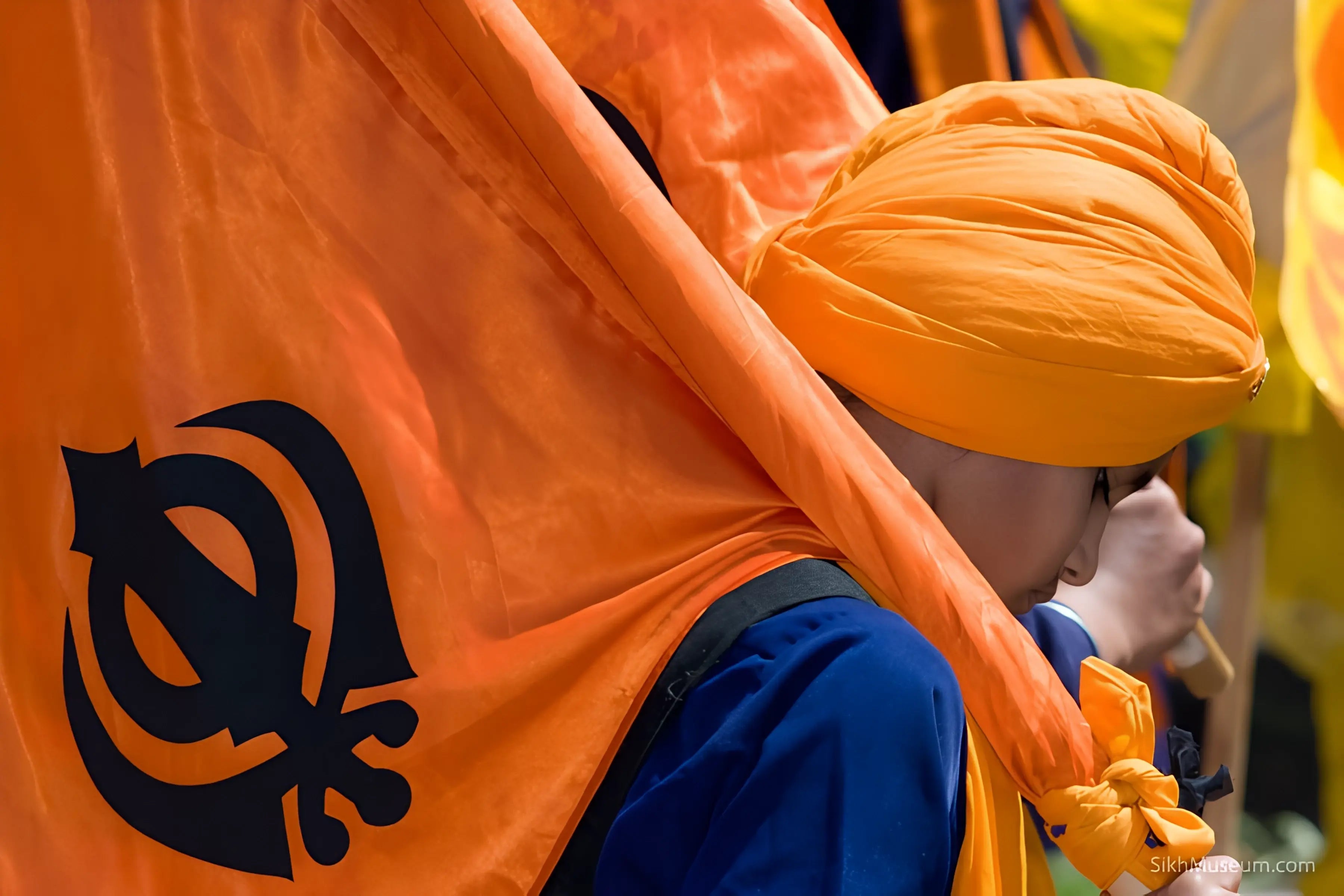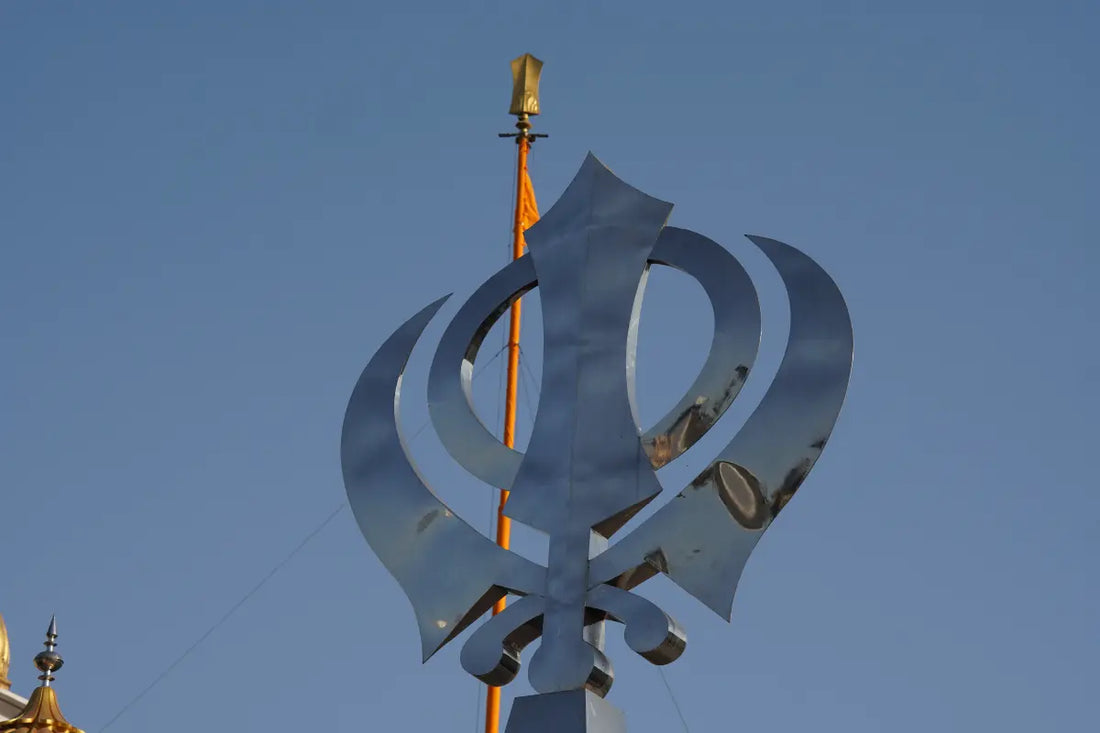You’ve seen it waving on a saffron flag outside a Gurdwara. You’ve worn it on a Kara, seen it on a Kirpan, or maybe displayed it proudly in your home. The Khanda is the most iconic symbol of Sikhism — yet many people don’t know what it truly means or how powerfully it represents the core values of the faith.
In this post, we break down the components of the Khanda, what they stand for, and how this powerful emblem unites Sikhs around the globe.
1. What Is the Khanda?
The Khanda is the official symbol of Sikhism. It represents spiritual strength, divine unity, justice, and balance. The symbol is made up of three key elements, each holding deep meaning:
🗡️ The Central Khanda (Double-Edged Sword)
-
Sits vertically in the centre
-
Represents divine knowledge that cuts through illusion and ego
-
Symbol of spiritual power and the ability to distinguish truth from falsehood
🔄 The Chakkar (Circular Disc)
-
The round, circular element behind the Khanda
-
Symbolises eternity, unity, and the oneness of Waheguru — no beginning, no end
-
Also represents the Sikh belief in equality and interconnectedness of all humanity
⚔️ The Two Kirpans (Crossed Swords)
-
Flanking the Khanda on both sides
-
Represent the Sikh doctrine of Miri-Piri:
-
Miri: Temporal authority (worldly justice)
-
Piri: Spiritual authority (connection with the divine)
-
-
Emphasises that Sikhs live with both earthly responsibility and spiritual depth
2. Where the Khanda Appears
The Khanda is found in many sacred and everyday spaces, including:
-
Nishan Sahib: The saffron flag that flies outside every Gurdwara
-
Kirpans: Often engraved onto the blade or scabbard
-
Karas: Symbolically etched onto the steel
-
Home décor: Used respectfully as wall art or frames
-
Jewellery: Worn as pendants, rings, or bracelet charms
-
Ceremonial Rumalay and Shastars
Wherever it appears, it carries dignity and power — and must be treated with reverence.
3. Respecting the Khanda
Because of its sacred meaning, the Khanda should never be used casually or as a fashion trend. To respectfully display or wear the Khanda:
-
Keep it clean and in good condition
-
Avoid placing it on the floor or in inappropriate settings
-
Use it as a reminder of your commitment to righteousness and seva
-
Educate others when asked — it’s an opportunity to share the beauty of Sikhism
Final Thoughts: A Symbol That Speaks Without Words
The Khanda is more than a logo or a symbol — it is a call to action. A reminder to live with shakti (power), prem (love), nimrata (humility), and seva (service).
To wear it, to display it, or to understand it is to connect with the essence of Sikhism — a faith that values bravery, compassion, and spiritual sovereignty.



